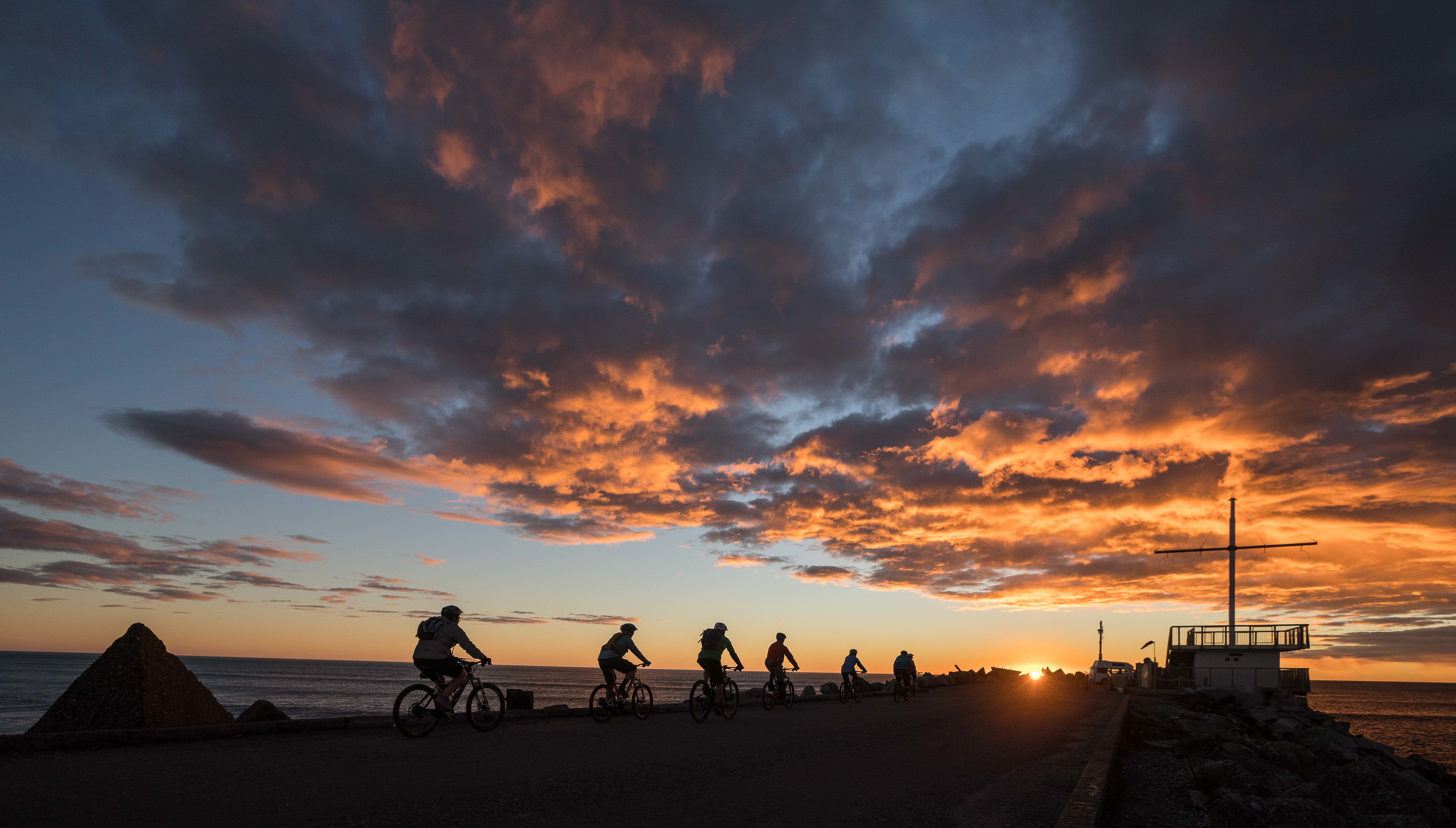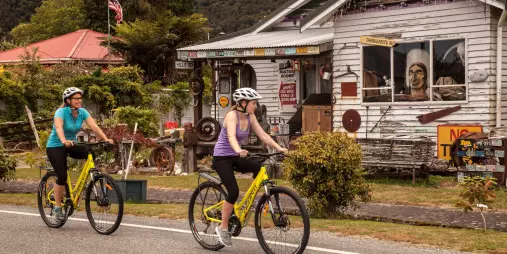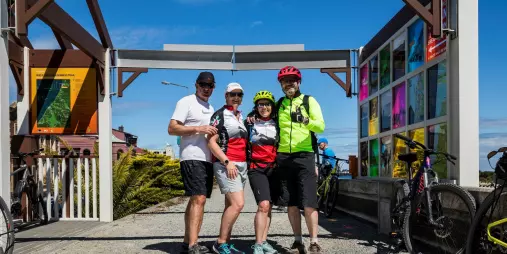Journey Through Nature: The West Coast Wilderness Trail
Welcome to the West Coast Wilderness Trail, a thrilling journey through the rugged landscapes of New Zealand's West Coast. This 139-kilometre (86-mile) trail stretches from Greymouth to Ross, following the routes of old prospectors and offering a glimpse into the region’s rich gold mining history.
As you ride, you'll encounter fascinating mining relics, abandoned workings, and authentic gold towns that still retain their historic charm. The trail takes you through a variety of stunning scenery, including towering native forests, glistening rivers, and peaceful wetlands brimming with birdlife, creating a unique and immersive experience.
In addition to the breathtaking landscapes, the trail passes through welcoming West Coast towns, where you can sample delicious local cuisine and enjoy the warm hospitality of the region. These small communities provide a perfect opportunity to rest and refuel while connecting with the rich heritage and culture that still thrives in this part of New Zealand.
The West Coast Wilderness Trail is rated Grade 2, making it ideal for cyclists of all skill levels. With mostly smooth gravel paths, the trail is accessible to both beginners and experienced riders, though a few short sections may require a quick dismount for a walk.
West Coast Wilderness Trail Itinerary

Grade: 2-3 (easy to intermediate), Distance: 33 km, Climb 106m, Ride time: 3-5 hours
On road sections are grade 3 intermediate.
Cycling the West Coast Wilderness Trail from Ross to Hokitika offers a unique blend of history, nature, and adventure. This 33-kilometer stretch is part of a longer trail that spans 132 kilometres in total, winding through some of New Zealand's most stunning landscapes. Starting in the historic gold mining town of Ross, cyclists are immediately immersed in the rich heritage of the region. The trail meanders through lush rainforests, along old water races, and past relics of the gold rush era, providing a fascinating glimpse into the past.
The path is well-maintained and suitable for riders of all levels, making it an accessible adventure for both seasoned cyclists and beginners. As you pedal through the native bush, the serene sounds of birdlife and the rustle of the trees create a peaceful atmosphere, offering a true escape into nature. The trail also includes sections along the shores of Lake Mahinapua, where the mirror-like water reflects the surrounding mountains and sky, creating a picturesque backdrop for your journey.
Approaching Hokitika, the landscape opens up to stunning coastal views. Hokitika itself is a vibrant town known for its arts and crafts, particularly jade carving. After a day of cycling, you can explore the local galleries, enjoy fresh seafood, and take a stroll along the wild beaches of the Tasman Sea.
Cycling the West Coast Wilderness Trail from Ross to Hokitika is not just a ride; it’s an immersive experience that captures the essence of New Zealand’s rugged West Coast. The combination of natural beauty, historical intrigue, and cultural richness makes this journey a memorable adventure for anyone seeking to explore the great outdoors.

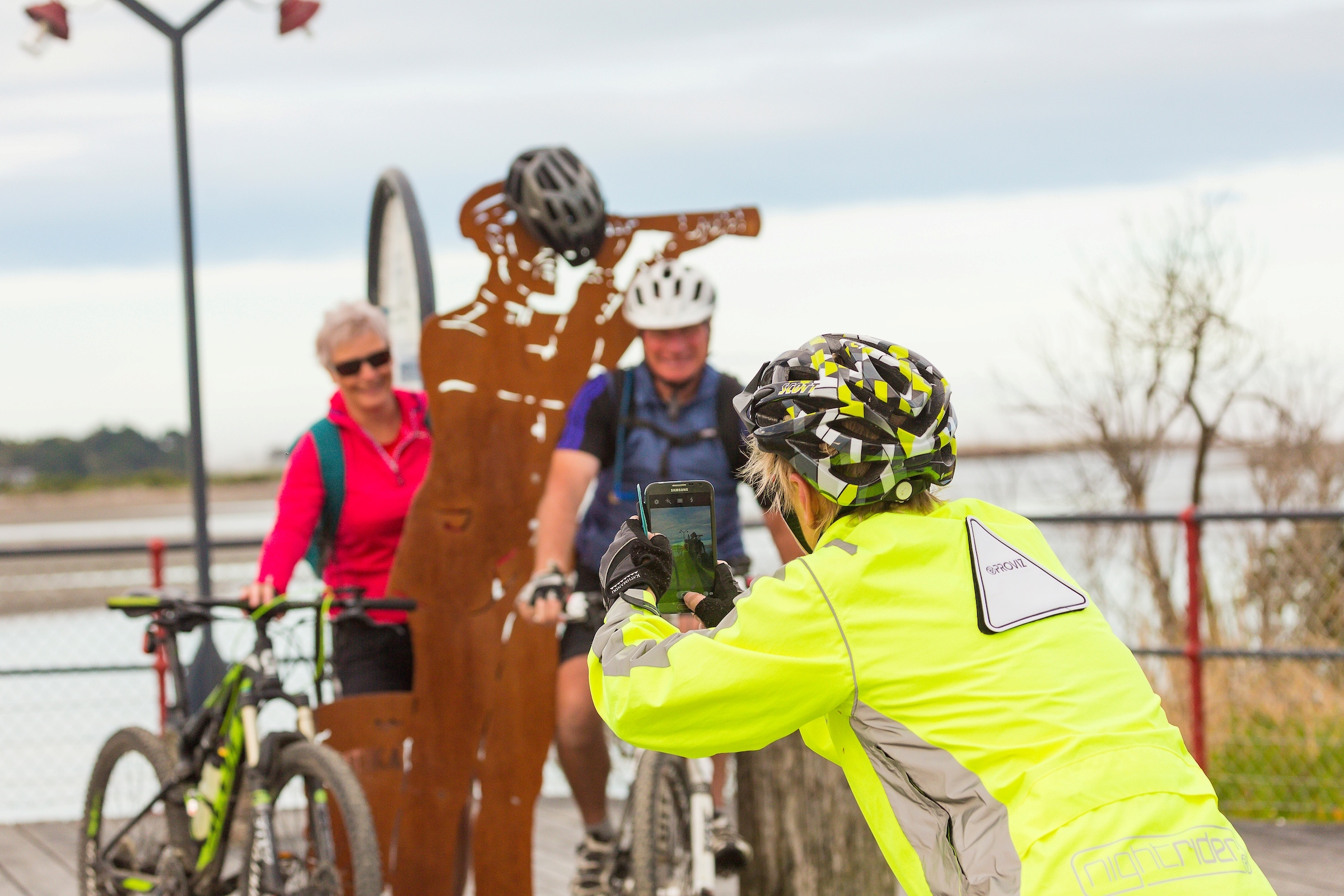
Grade: 2-3 (easy to intermediate), Distance: 36 km, Climb 137m, Ride time: 3-5 hours
On road sections are grade 3 intermediate.
Cycling the West Coast Wilderness Trail from Hokitika to Milltown is an exhilarating experience that showcases the diverse beauty of New Zealand’s West Coast. This section of the trail is approximately 36 kilometres long and takes riders from the vibrant town of Hokitika, known for its artistic spirit and stunning sunsets, deep into the heart of lush rainforests and historic landscapes.
Starting in Hokitika, cyclists are immediately treated to scenic views of the Tasman Sea and the iconic Hokitika River. The trail then heads inland, following a route that once served as a critical path for pioneers and gold miners. As you leave the coastal town behind, the terrain transforms into a tapestry of native bush, with towering trees and dense vegetation providing a tranquil and shaded ride.
One of the highlights of this segment is the journey through the ancient forests of the West Coast. The trail winds through groves of towering rimu and kahikatea trees, creating a canopy that feels both mystical and serene. The sounds of native birds, such as tui and bellbirds, accompany you along the way, enhancing the immersive natural experience.
Further along, the trail passes by Lake Kaniere, a stunning body of water renowned for its crystal-clear reflections of the surrounding mountains. This lake is a perfect spot for a rest break, offering opportunities for a refreshing swim or a peaceful moment to soak in the breathtaking scenery.
As you continue towards Milltown, the trail follows historic water races and tramlines that once transported timber and gold. These remnants of the past add a layer of historical intrigue to the ride, allowing cyclists to imagine the bustling activity that once characterized this remote region.
Milltown itself is a quaint settlement that offers a glimpse into the region’s rich history and the lives of those who once toiled in these rugged landscapes. The trail from Hokitika to Milltown is a journey that blends natural splendour, historical depth, and the thrill of exploration, making it a must-do for any cycling enthusiast visiting New Zealand’s West Coast.


Grade: 2-3 (easy to intermediate), Distance: 36 km, Climb 310m, Ride time: 3-6 hours
On road sections are grade 3 intermediate.
Cycling the West Coast Wilderness Trail from Milltown to Kumara is a captivating adventure that reveals the heart and soul of New Zealand’s West Coast. This 29-kilometre section of the trail takes you through a landscape steeped in natural beauty and historical significance, offering a journey that is both physically invigorating and mentally refreshing.
Starting in Milltown, a small settlement with roots in the region’s pioneering past, the trail immediately immerses you in the dense, verdant forest that characterizes much of the West Coast. As you pedal through this lush environment, you’ll encounter a variety of native flora and fauna, with towering trees and the constant chorus of birds providing a serene backdrop.
One of the most remarkable features of this section is the ride through the Kapitea Reservoir and the accompanying water races. These man-made channels, originally constructed during the gold rush to supply water for sluicing, now serve as a fascinating historical element along the trail. The engineering feats of the past are evident here, and the tranquil water adds a reflective beauty to the ride.
The trail also includes several old logging and gold mining routes, giving cyclists a sense of the area’s rich history. As you pass by remnants of the gold rush era, you can almost imagine the bustling activity and the hopes and dreams of the miners who once worked these lands.
The route features a mix of gentle gradients and more challenging sections, catering to a range of cycling abilities. The well-maintained path ensures a smooth ride, allowing you to fully appreciate the surrounding scenery. As you approach Kumara, the landscape opens up to reveal stunning views of the Southern Alps in the distance, creating a dramatic and picturesque finish to this leg of the journey.
Kumara itself is a charming historic town, once a thriving gold mining hub. Today, it retains much of its old-world charm, with heritage buildings and a welcoming atmosphere. After a day on the trail, Kumara offers cosy accommodations and a chance to explore local history further, making it a perfect endpoint for this memorable ride.
Cycling from Milltown to Kumara on the West Coast Wilderness Trail is a journey that combines the tranquillity of nature, the intrigue of history, and the joy of cycling, offering a truly unique experience on New Zealand’s West Coast.
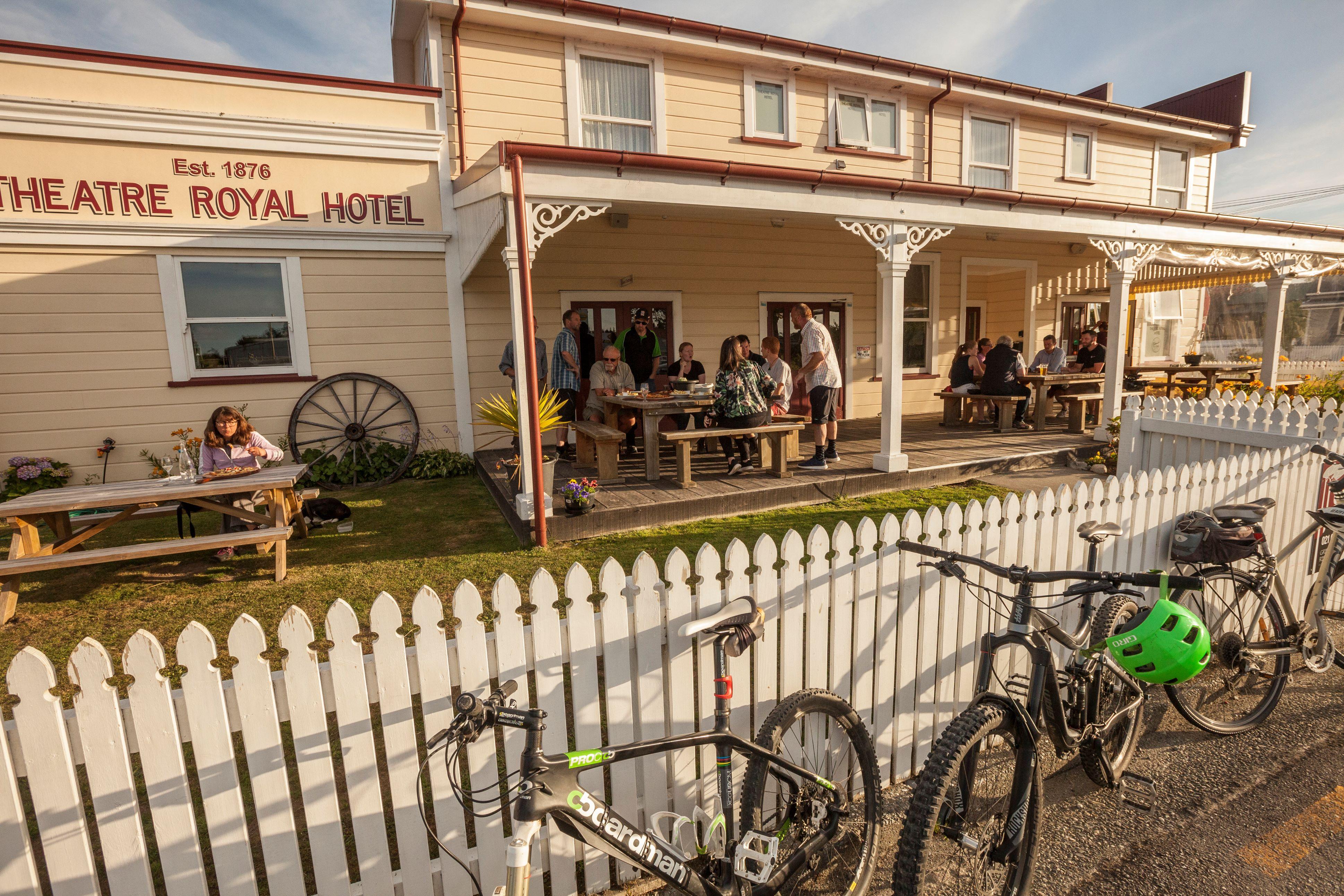
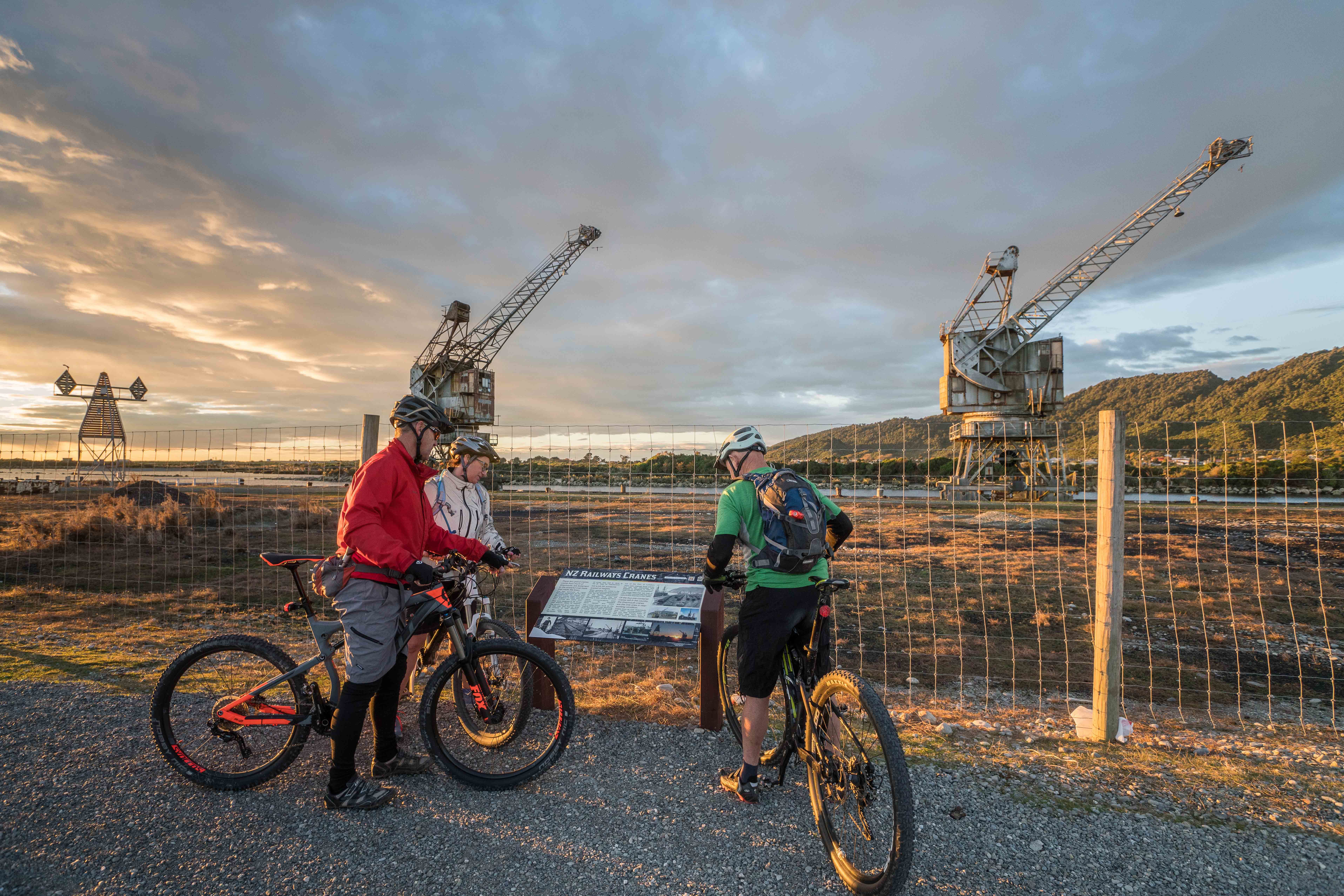
Grade: 2 (easy), Distance: 31 km, Climb 99m, Ride time: 2-4 hours
Cycling the West Coast Wilderness Trail from Kumara to Greymouth is a thrilling conclusion to one of New Zealand’s most scenic and historic routes. This final 31-kilometer section takes riders from the charming, historic town of Kumara to the coastal city of Greymouth, offering a mix of lush forests, serene rivers, and dramatic coastal vistas.
Starting in Kumara, a town that still echoes the gold rush era, the trail quickly immerses you in the rich natural beauty of the West Coast. As you leave Kumara, you pedal through the tranquil Kumara Reservoir, where the mirror-like water reflects the surrounding forest, creating a peaceful and picturesque scene.
The trail then follows the old Kumara Tramway, an engineering marvel of the 19th century that transported timber and gold. This historic route takes you through dense native bush, where the vibrant greenery and the songs of native birds create a serene and immersive experience. The well-maintained path offers a relatively easy ride, allowing you to fully enjoy the surrounding natural beauty.
As you progress, the landscape begins to change, with the forest giving way to open farmland and the Grey River emerging as a constant companion. The trail meanders alongside the river, offering stunning views of its clear waters and the distant mountains. This section provides a perfect mix of gentle riding and scenic beauty, making it a joy for cyclists of all levels.
Approaching Greymouth, the trail takes you through the scenic Taramakau River bridge, a unique shared bridge that adds a touch of adventure to your ride. This bridge crossing offers spectacular views of the river below and the surrounding landscape, providing a memorable highlight of the journey.
The final stretch into Greymouth follows the coast, where you are greeted by the rugged beauty of the Tasman Sea. The crashing waves and the salty sea breeze provide a dramatic and invigorating end to the trail. Greymouth itself is a vibrant town with a rich history of gold mining and coal production. Here, you can explore local museums, enjoy fresh seafood, and reflect on the incredible journey you’ve just completed.
Cycling from Kumara to Greymouth on the West Coast Wilderness Trail is a fitting finale to a trail that offers an unparalleled mix of natural beauty, historical intrigue, and outdoor adventure. This section encapsulates the spirit of the West Coast, making it a must-do for any cycling enthusiast.
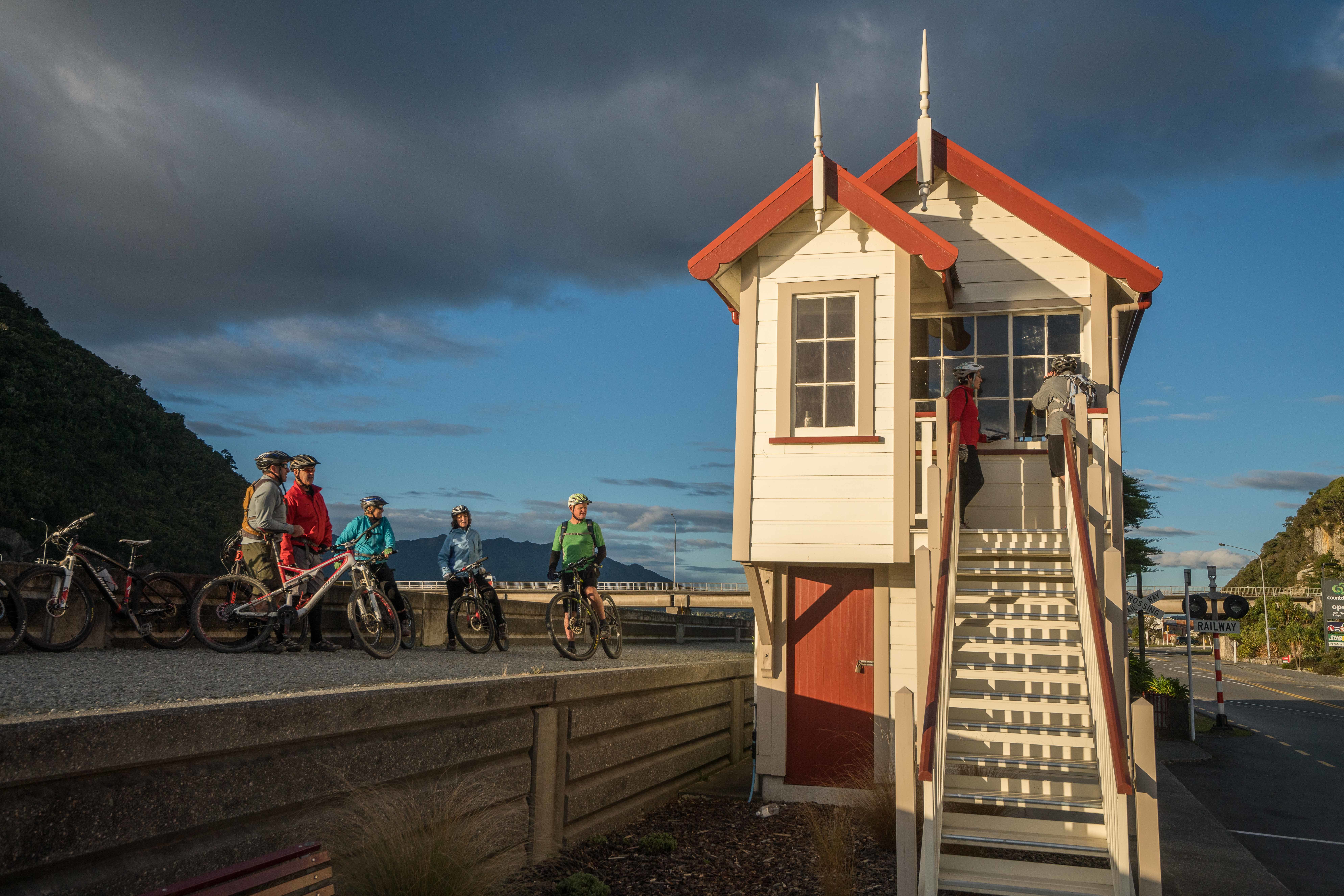
Trail Highlights
As you explore the trail, you'll encounter an array of breathtaking sights and experiences. Here are some of the trail's notable highlights:
- Coastal Scenery: Marvel at the stunning coastal vistas as you traverse sections of the trail that hug the rugged coastline. Enjoy panoramic views of the Tasman Sea, with its crashing waves and dramatic cliffs.
- Dense Rainforests: Immerse yourself in the lush greenery of the region's ancient rainforests. The trail takes you through dense forests where towering trees, vibrant ferns, and native flora create a magical atmosphere.
- Lake Kaniere: Discover the tranquil beauty of Lake Kaniere, a picturesque freshwater lake surrounded by pristine forests. Take a moment to soak in the serenity and enjoy the reflections of the surrounding mountains on the calm waters.
- Historic Sites: Encounter remnants of the area's rich history along the trail. Explore old gold mining sites, remnants of railway lines, and historic townships that offer a glimpse into the region's past.
- Hokitika Gorge: Prepare to be mesmerized by the vibrant turquoise waters of Hokitika Gorge. A short detour from the trail leads you to this natural wonder, where the vivid colours of the water contrast against the lush green surroundings.
- Wild West Coast Beaches: Experience the untamed beauty of the West Coast's wild beaches. From rugged stretches of black sand to pristine white sand beaches, these coastal gems offer a unique blend of tranquillity and raw power.
- Wildlife Encounters: Keep an eye out for native wildlife along the trail. You may spot native birds, such as the cheeky kea or the iconic kiwi, as well as the rare Hector's dolphins or fur seals near the coastline.
- Local Cuisine and Craft: Indulge in the region's delectable cuisine and discover the local craft scene. The trail passes through charming towns where you can sample freshly caught seafood, savour artisanal cheeses, or explore art galleries showcasing local talent.
- Sunsets and Stargazing: End your days on the trail by witnessing mesmerizing sunsets over the coastline. As night falls, take advantage of the region's clear skies and lack of light pollution for unforgettable stargazing experiences.
These are just a few of the many highlights you can expect to encounter along the West Coast Wilderness Trail. Each turn of the trail offers a new discovery, ensuring an enriching and awe-inspiring adventure in the heart of nature.
